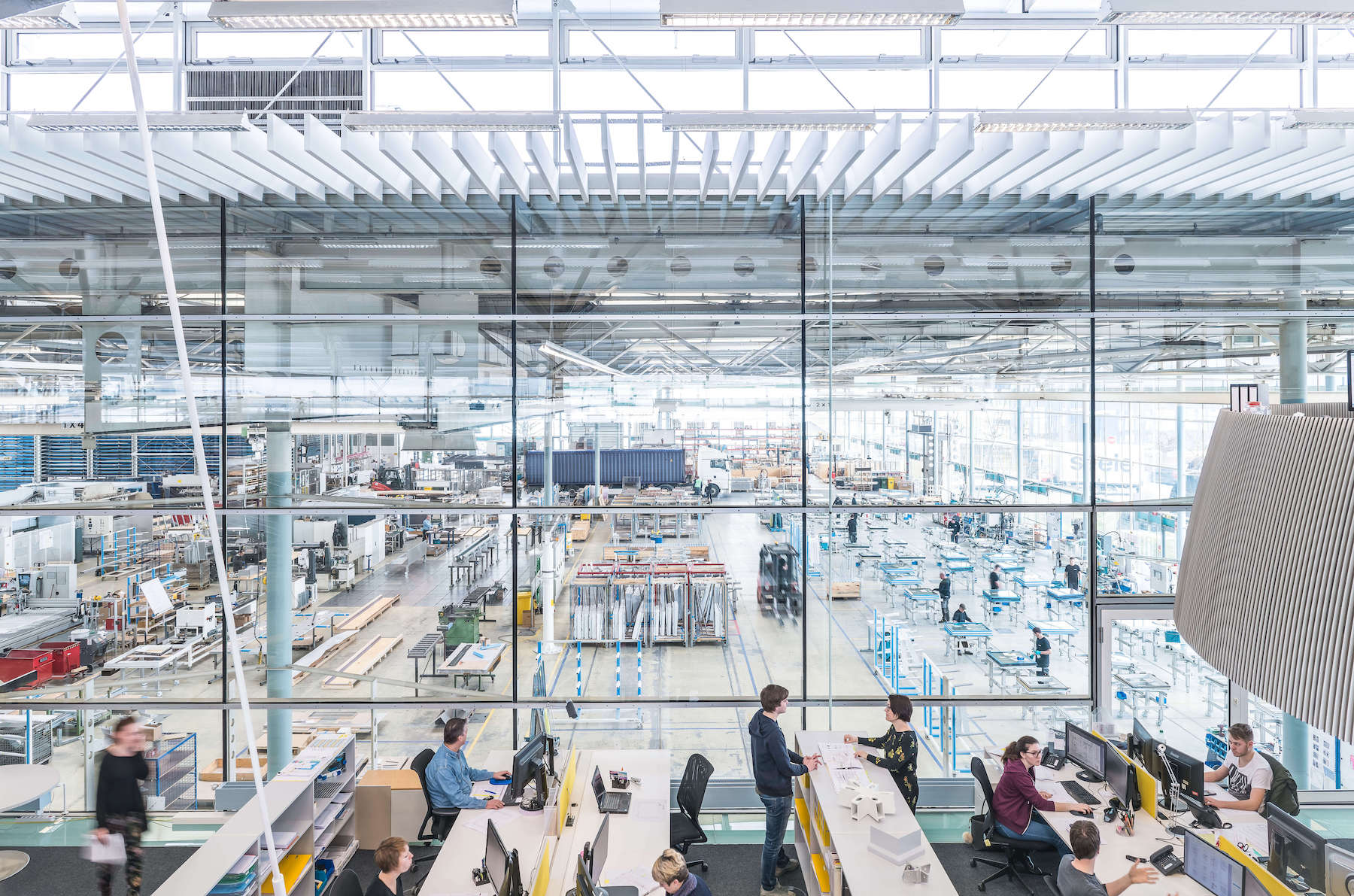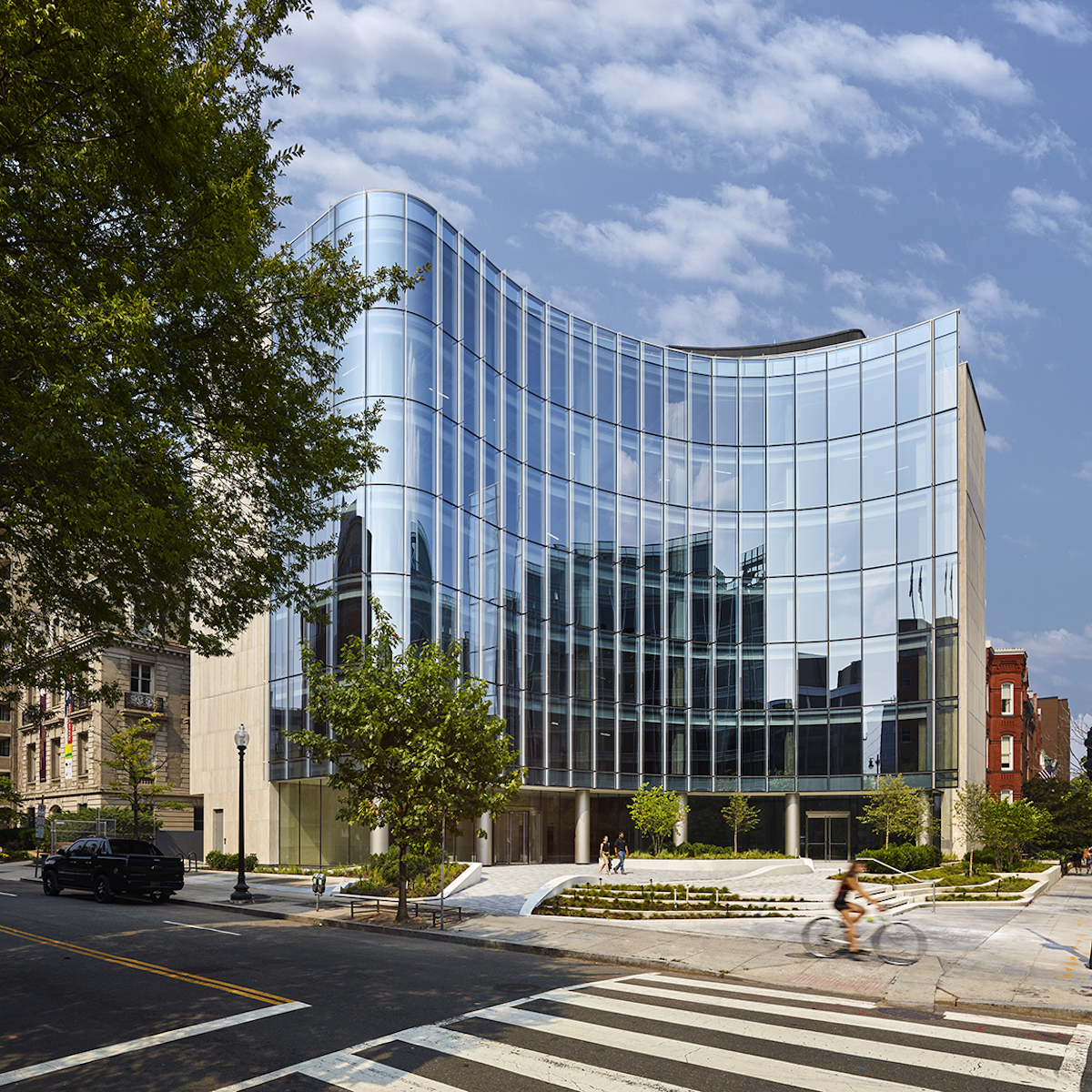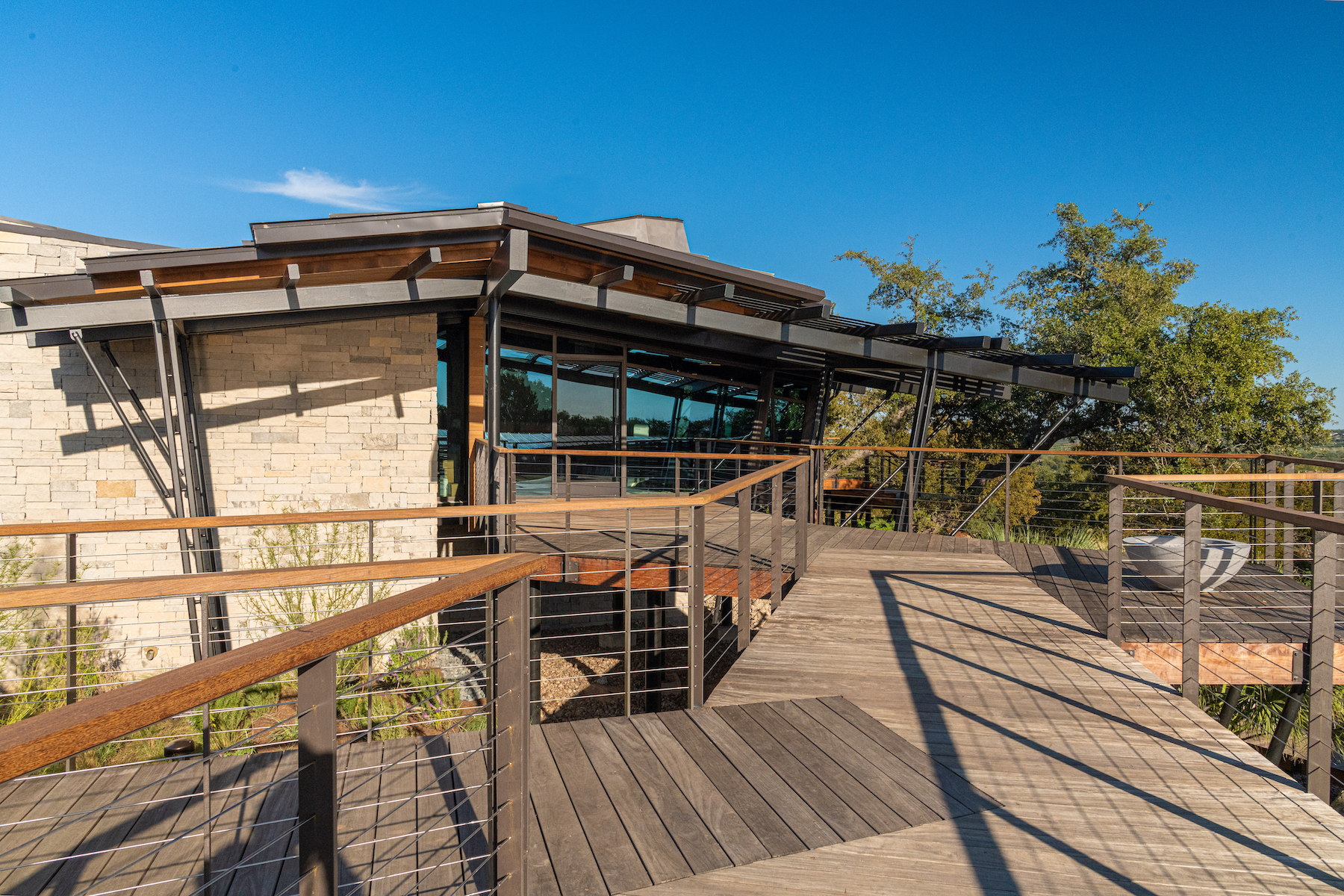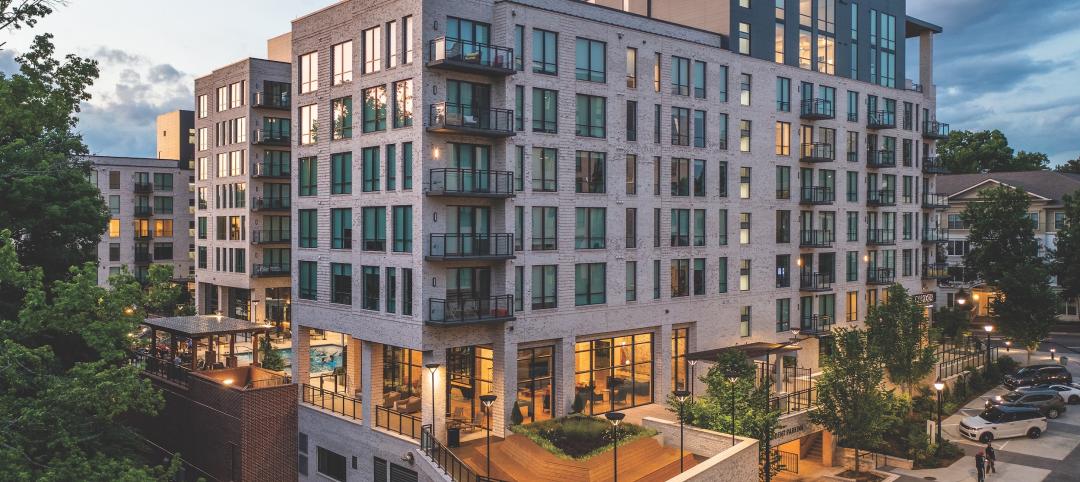For glass openings, how big is too big?
Glass and glazing play a critical role in building energy performance and occupant wellbeing. This BD+C University course covers novel glass and glazing technologies, including jumbo sizes, vacuum-insulated units, and interior glass systems.

Advances in glazing materials and glass building systems offer a seemingly unlimited horizon for not only glass performance, but also for the size and extent of these light, transparent forms. Both for enclosures and for indoor environments, novel products and assemblies allow for more glass and less opaque structure—often in places that previously limited their use.
For exterior systems, jumbo glass and high-span curtain walls are pushing the limits of monolithic panel sizes seen in recent years. Many experts credit Apple’s supermodern, glass-enclosed stores for igniting this trend, says John Ivanoff, Associate Principal, Façades with multidisciplinary consultancy Buro Happold. “Apple had the right budget to create stores with floor-to ceiling glass and structural glass stairs, and their building teams partnered with manufacturers such as sedak in Germany, known for bending and strengthening panels, as well as NorthGlass in China, two of the largest suppliers for extremely oversized glass,” says Ivanoff.
From Apple’s influential, over-the-top storefront conditions to today’s widespread jumbo applications, some fundamental challenges, from fabrication to installation, restrict the dimensions of glass openings. “While the length of the glass panels can continue to grow, the furnaces used tend to limit possible widths and the ability to curve larger panels,” says Ivanoff, noting that today’s largest glazed spans exceed 72 feet (22 meters) in length and 13.75 feet (4.2 meters) in width. “So, it’s gotten a bit crazy over the years,” he adds.
Other influential works include Apple’s headquarters in Cupertino, Calif., with its meticulously crafted, curved glass panels up to 47 feet long and 10 feet tall, with weights exceeding three tons per unit. Produced by glass manufacturers sedak and its sister company seele, the Foster + Partners-designed building employs more than 3,000 sheets, including 872 cold-bent panels of safety glass, cured five at a time in an extra-large furnace built specifically for the task.
A newer project, the 39-story recladding of 660 Fifth Avenue designed by Kohn Pedersen Fox and installed by Island Exterior Fabricators, replaces a memorable mid-century patterned cladding (by architects Carson & Lundin) with the largest class curtain wall openings possible for the structure, utilizing the full span between each perimeter column.

According to seasoned design and construction firms, unit prices for jumbo glass panels present less of an issue today. Instead, it’s the cost of installing the panels that far outweighs materials budgets in terms of project impact. Building teams are challenged in identifying competent specialty contractors, first, and then in evaluating logistics for delivering the massive panels to constrained urban jobsites. The weight of the glass is also quite problematic, both in erection and in designs for today’s applications favoring fewer mullions and less structure.
On the other hand, supply is strong. “More suppliers are available to provide large glass units than in the past,” says David Frey, FAIA, LEED AP BD+C, Technical Principal with HOK. “As availability has increased, costs have come down, so architects are more comfortable designing façades with larger glass sizes.”
Design obstacles for expansive glass systems
That said, Frey offers some words of guidance for architects and building teams considering larger glass sizes: “First, modern energy codes make it more and more challenging to achieve greater than 50 percent vision glass on a building. Consequently, meeting the U-value of an assembly is more difficult,” he says, alluding to the thermal transmittance of, or rate of heat transfer through, a building material or assembly.
Frey also points to the importance of window-to-wall ratio (WWR) analysis, which—in conjunction with preliminary energy modeling—now “occurs very early in the design phases.” In addition, structural engineers and other façade designers must collaborate closely to address tolerances and critical variables such as elastic and inelastic seismic movement, he says, which allow for the minimum level of ductility structures require in some earthquake-prone jurisdictions.
WWR and U-value analyses also help building teams address questions about the relative benefits of daylighting and thermal gain through larger glazed openings, says Antonia Walker, Project Architect and Manager with Body Lawson Associates Architects and Planners (BLA). Natural light benefits occupant health and can reduce heating costs, but it also raises HVAC operations costs in the cooling season, she notes. In her firm’s affordable housing developments, Walker’s design teams are pushing for larger openings and more apertures, such as at the Peninsula, a new, 740-unit mixed-use campus which just completed its first residential tower. The project features 164 units on 14 stories wrapped in a textural brick façade in the Bronx, N.Y., designed by WXY architecture + urban design and BLA.

Studying the U-values and completing energy calculations, BLA’s Walker and WXY Senior Associate Tom Offord worked to maximize window area; fortunately, the best mechanical solution did not use packaged terminal air-conditioning units but instead a ductless, variable-refrigerant-flow (VRF) system. With no grilles needed in the openings, the uninterrupted full-height windows employ double-glazed IGUs with a low-emissivity coating and argon fill set in polyvinyl chloride (PVC) window frames—a spec that also benefits interior acoustics for residents living adjacent to an industrial area. “The noise factor was a big consideration,” says Walker, “and the windows work well, even on the third floor.”
In a departure for affordable housing, these full-height windows flood public interior zones with maximum daylighting, too, “serving as a reorientation device and as a way to passively introduce natural light in hallways, which otherwise would rarely have natural light,” adds Victor Body-Lawson, FAIA, Founding Principal of BLA. Adding to the natural illumination theme, WXY and BLA located circular fire-rated windows in entrance doors to the building’s fire stairs, all at an ideal height for visibility for children and wheelchair users.
The portholes offer a glimpse at another growing trend: the expanding use of fire-rated products into building enclosures and, even more prevalent, in interior spaces. From stairwell enclosures where glass walls help entice occupants to use the stairs, to elevator enclosures and other vertical shafts, larger wall areas with fire-protective glass are being seen in entry zones, areas of egress, and surrounding atriums for public gathering.
Fire-protective, resistive solutions for glass and glazing systems
Increased use of fire-protective glazings also helps optimize daylight illuminated, open interiors. Those specialized glass assemblies can incorporate basically any high-performance, low-e, dynamic glass or sun control devices without impacting their capacity for fire ratings, says Tim Nass, a Vice President and fire glass expert with Safti First. “Fire protective products are considered protected openings by code, meaning they compartmentalize the visual elements of a fire—smoke and flames—but do not address the issue of radiant energy or heat generated by a fire,” says Nass. By contrast, fire-resistive assemblies are essentially considered walls: “It is important to understand that the code does not distinguish between transparent and opaque. Nonetheless, fire-resistive assemblies compartmentalize visual elements of fire while also stopping the transfer of radiant energy or heat generated,” he adds.
In this way, building teams no longer consider transparent but fire-resistive partitions as “openings.” In compliance with the key standard ASTM E119, these glass separations that control heat flux are walls, pure and simple. “In situations where two buildings are close to adjacent property lines, fire-rated glass provides opportunities for increased vision glass in proximity to that property line,” says HOK’s Frey. “Fire-rated structural glass floors can also give the appearance of visual connectivity vertically between floors.”
Other building teams find they are expanding their uses of interior storefront, says Lauren LoPresti, NCIDQ, Interior Designer with The Architectural Team, known as TAT. “We’ve looked at interior storefront and using more glass, which is an effective and impactful way to separate spaces and separate functions without totally enclosing them.” Examples include the adaptive reuse of Cliftex Mills in New Bedford, Mass., where the historic, 115-year-old brick building with river views is being renovated into multifamily housing for 55-plus active seniors.

“The mill building has long, wide corridors, and the client envisaged amenity spaces off the corridors while still maintaining clear sight lines throughout from the front to the back of the circulation volume,” says TAT’s LoPresti. “To optimize the layout for both occupant circulation and functionality of the amenity zones, on three levels we used a storefront with glass above an opaque three-foot base.”
Interior glass trending up in commercial buildings
Interior glazing is described as “extremely valuable” for building design, as it allows layouts that separate certain functions and spaces while still maintaining a desirable degree of visibility between the two functions, says TAT’s Scott E. Maenpaa, a Project Manager. Yet, interior glass partitions may afford too much visibility in certain applications, he adds. “To fix this, we try to ensure none of our glass sections are too large, since oversize pieces can be more prone to shattering in transportation or too difficult for installers to handle,” says Maenpaa. “Also, we often specify a frosted or tinted glass type, such as a glass film, or we try to be creative with the mullion applications so we have smaller areas of glass where privacy is most desirable.”
Among those solutions are electrochromic glass and “smart glazing” products that adapt to changing conditions. “For south-facing building façades,” says HOK’s Frey, “large glass expansive walls—in airport boarding areas, for example—electrochromic glass is a very effective method of controlling daylight and increasing occupant comfort.”
One challenge with these electronically controlled openings, says Buro Happold’s Ivanoff, is working to avoid their getting value engineered out of the design. “On top of that, electrochromic technology changes about every two years, in terms of their appearance or switching time, for example, which improves significantly year after year. Some systems have the ability to connect to an app, like a smartphone, which is fantastic.”
Yet at the scale of a building, leaving the owner or developer with what may be considered an outdated product speaks to the challenge of adaptability of the electrochromic glazings. They may also present challenges for replacement of the smart IGUs in an effort to adapt to changes in technology. Interior glass replacements, on the other hand, are easier and tend to be less costly and disruptive.
Reflecting the fast pace of technological advances, product makers are changing as well. French glass giant Saint-Gobain acquired electrochromic glass innovator SageGlass in 2012, for example, with large-scale fabrication capabilities in Minnesota. The company View Glass, with its vaunted machine-learning technology for tinting control, announced a merger last year with a financial backer, effectively going public.
Clearly, the appetite for applications of super-clear glass that can adapt for varying conditions—on different elevations and different times of day—is seen as a growth industry. Ivanoff and Body-Lawson also point to project examples where electrochromics eliminate façade components such as sunshades or interior solar control while still resolving issues of glare and thermal comfort for occupants.
Smart glazings are also finding applications on storefronts and glass entry areas, where changing conditions and visibility needs benefit from their unique control. These ground-floor solutions often serve as testbeds for the newest glass design ideas, too, whether for jumbo glass panels, fire-rated separations, or unique glass aesthetics.
Storefronts as testbeds
For projects such as New York City’s 111 West 57th Street, for example, building teams are employing the largest glass panels with minimal visible mullions and frames for their lowest floors, including retail spaces. Public spaces like Boston’s The Exchange designed by Perkins and Will and Mikyoung Kim Design create new “living rooms” that welcome the public into steel-framed and glass-enclosed atriums full of retail and hospitality offerings. Built by Turner, the prismatic form with angled glass walls trumpets the availability of new amenities in the city’s bustling Financial District.
Retail storefronts such as McDonald’s in New York City’s Times Square, where three levels of floor-to-ceiling insulating glass create dramatic views outdoors while completely muffling noise and protecting against heat gain. With architecture by Progressive AE and design by Landini Associates, which has created McDonald’s flagships in dozens of cities, the three-story glass-fin curtain wall erected by Schimenti Construction projects four feet beyond the existing building structure. Inside, natural daylighting is supplemented by dynamic, integrated lighting controls with dramatic day and night presets.

Landini Associates employed massive glass façades and bright red glazing for other flagships in Tianjin, China, and Brisbane, Australia. Their mullionless yellow glass panels for the McDonald’s “Sky Kitchen” at Sydney Airport transform a kitchen enclosure into “a visible signage beacon and showcase of team and process.” It’s ranked as one of Vogue Australia’s 35 “most beautiful restaurants worth visiting for their design.”
Another glass innovation seeing more storefront and similar applications is vacuum-insulated glass, known as VIG. While relatively new, the highly insulating yet lightweight glass units have been used for a 2006 greenhouse project and, by 2011, for a large-scale library. More recently, Boulder Community Health’s West Medical Building incorporated hybrid vacuum-insulated glass, or HVIG, windows to improve year-round energy efficiency and comfort by reducing thermal transmittance and convection at its storefront openings and punched windows.
In contrast to the U-value of 0.29 for low-e insulated glass, the HVIG panels specified by design firm Boulder Associates tested to a U-value of 0.071 on the north façade and 0.064 on the others, cutting visible light transmittance (VLT) by 13 percent, which perceptibly cuts glare through its façades with higher solar radiation.
Varied applications and glass solutions
VIG glass retrofits can benefit older buildings, says Buro Happold’s Ivanoff, where glass units must have a thinner profile of glass but still deliver a higher performing U-value. “This application is trending now, as the construction industry and real estate owners are considering triple-glazed windows, but they are very heavy compared to normal insulated glass units, and now VIG, which is a positive change coming in the future,” he says. Investing in the promise of VIG are companies like Vitro Architectural Glass, which last year acquired North American rights to sell tempered VIG products developed by LandGlass and VIG Technologies.
Another trending design concept is structural glass, including for glass stairs and floors—exciting “horizontal applications,” says Safti First’s Nass. “Fire-rated floors have a dramatic effect on any building’s design and can be a unique way of bringing in natural light from above.” Yet he cautions that these challenging applications may encounter restrictions on glass size, floor loading, and installation options. “We have designed a floor that incorporates the walkable surface directly into the fire-resistive glass, which allows the glazier to install the floor from above using a crane or glass manipulator.” Other systems available rely on installing smaller pieces, adding to the challenge. Yet many can be customized with graphics and are made with nonskid, ready-to-walk surfaces.
For varied building types, larger glass expanses and more application types are the key to successful building solutions, says Rockland Berg, AIA, NCARB, SAGE, ASHA, Principal of design firm three. “For senior living communities, we are responding to a market preference for larger balconies and full-height windows to bring in more natural daylight,” says Berg. Yet these settings also require “screening strategies” that reinforce healthy connections to nature and make spaces feel larger—balconies doubling as outdoor “great rooms,” for example, adds Berg: “Making the most of the outdoors inspires residents to be more active and engaged.”
For hospitality projects, Berg views glass as central to the array of improved amenities expected by patrons. The Cap Rock Members Club complex in Horseshoe Bay, Texas, designed by three, offers members a southwest orientation with extensive glazed zones to maximize sunset viewing in the clubhouse restaurant and lounge. Designed with slender roof openings, gently angled floor-to-ceiling windows, and modern glass overhead doors within the façades of Texas Lueders limestone, the clubhouse draws in sunlight and scenery seemingly everywhere.
Data and Analytics for Glass Walls
Thanks to data and analytics used routinely today to model and predict building performance, new and remarkably subtle approaches are being used to create facades and interior glass assemblies that allow more visible light transmission (VT) while reducing undesirable heating by direct sunlight, measured as solar heat gain coefficient (SHGC), or energy losses caused by radiating energy (emissivity) and direct conduction. Key measures of glass system performance include:
- U-factor, the rate of conduction of non-solar heat flow by building enclosure elements including curtain wall, windows, and skylights.
- Air leakage, the rate of air movement around a glazed opening such as a window, door or storefront subjected to a specific pressure difference.
- Light-to-solar-gain (LSG) ratios, which compare SHGC and VT as a measure of the relative efficiency of glazing materials in transmitting daylight while blocking heat gain.
A proliferation of in-house-developed and third-party simulation software tools are supporting building team efforts to better evaluate and design glazed assemblies with finely tuned control of all these variables.
Smart Glass for Smarter Buildings
The category of glazings collectively termed “smart glass” are adding to the interior and enclosure applications. New techniques developed for smart glass include thin films that can display augmented reality (AR) information in compatible devices or convert solar energy into electricity, or both. Similarly, ultra-thin photodetectors—used in many smartphones—hold promise for glazings with automated sensing properties, according to Corning, which collaborated with Penn State’s Materials Research Institute on a novel way to integrate the light detectors with the manufacturer’s chemically strengthened Gorilla Glass.
While glazings with instant smarts will one day grace building facades and interior partitions, current commercial applications are focused on optimizing daylight, say building teams.
More Campus Related Content
Structural
Waterproofing deep foundations for new construction
Below-grade waterproofing systems can be critical features of building enclosure design, particularly when the structure has a deep foundation. As…
 course credit: 1.0 AIA LU/HSW
course credit: 1.0 AIA LU/HSW
Interior design/Interior architecture
Performance-based facilities for performing arts boost the bottom line
New technologies, innovations, and tools are opening doors for building teams interested in better and yet less-expensive performing arts facilities…
 course credit: 1.0 AIA LU
course credit: 1.0 AIA LU
Exterior
For the Multifamily Sector, Product Innovations Boost Design and Construction Success
It seems fitting that wider adoption of thin-shell concrete, a technology popular worldwide but somehow unfavored in the U.S., has resulted from the…
 course credit: 1.0 AIA LU/HSW
course credit: 1.0 AIA LU/HSW
Provided By: BD+C
Exterior
Fire safety considerations for cantilevered buildings [AIA course]
Cantilevered buildings seem to be everywhere in New York City these days, as developers and architects strive to maximize space, views, and natural…
 course credit: 1.0 AIA LU/HSW
course credit: 1.0 AIA LU/HSW
Provided By: BD+C
Exterior
4 steps to a better building enclosure
Dividing the outside environment from the interior, the building enclosure is one of the most important parts of the structure. The enclosure not…
 course credit: 1.0 AIA LU/HSW
course credit: 1.0 AIA LU/HSW
Provided By: BD+C
With affordability and innovation for all: Multifamily housing ideas break barriers
With a growing need for multifamily housing solutions at all income levels, the U.S. market is seeing a proliferation of inventive projects.…
 course credit: 1.0 AIA LU/HSW
course credit: 1.0 AIA LU/HSW
Provided By: BD+C
Exterior
Metal cladding trends and innovations
Metal cladding is on a growth trajectory globally. This is reflected in rising demand for rainscreen cladding, which market research firm VMR values…
 course credit: 1.0 AIA LU
course credit: 1.0 AIA LU
Provided By: BD+C
Structural
Flood protection: What building owners need to know to protect their properties
Historically, flooding is one of the costliest natural disasters in the United States on an annual basis. Flood Insurance Rate Maps (FIRMs) attempt…
 course credit: 1.0 AIA LU/HSW
course credit: 1.0 AIA LU/HSW
Provided By: BD+C
Multifamily housing/Apartments/Condominiums
Urban housing revival: 3 creative multifamily housing renovations
Bruner/Cott’s AIA award-winning inaugural project, the 1974 transformation of Boston’s expiring Chickering & Sons Piano Factory into the Piano…
 course credit: 1.0 AIA LU
course credit: 1.0 AIA LU
Provided By: BD+C
Structural
Steel structures offer faster path to climate benefits
Faster delivery of buildings isn’t always associated with sustainability benefits or long-term value, but things are changing. An instructive case is…















